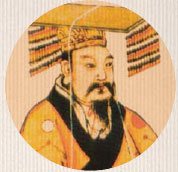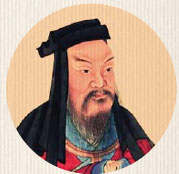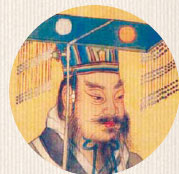Traces Of The Kingdom Of Shu
Whenever she mentions her trip to the plank road in Guangyuan, Sichuan province, Wu Dan, a young woman from Beijing, would say that she has an awesome respect for those who built it.
Guangyuan is known for a plank road along the Shu Path. Shu was the ancient name for Sichuan.
Construction of the Shu Path linking Sichuan and neighboring Shaanxi province started around 316 BC. It was built on mountains so precipitous that Li Bai (AD 701-62), one of China's best-known poets, wrote, "Traveling on the Shu Path is as difficult as ascending to heaven."
When builders of the path approached the Mingyue Gorge in Guangyuan, they found it impossible to continue the project as the cliffs were too steep. After much thought, they came up with a bold idea.
They chiseled three levels of holes in the cliffs and inserted wooden beams into the holes.
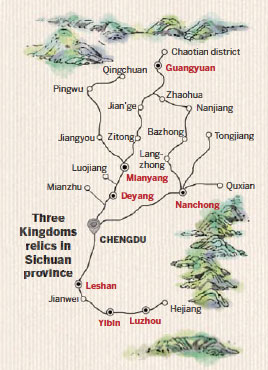
The upper beams were covered with planks to form a road for pedestrians and the second and third levels held buttresses.
During the Three Kingdoms period (AD 220-80), Zhuge Liang, prime minister of the Shu Kingdom, used the plank road to transport troops to fi ght rival troops in the Wei Kingdom in North China.
The plank road was burned down and rebuilt many times during wars. Now part of it has been restored to allow visitors to admire this man-made wonder.
Some 1,800 years ago, China was divided into three states - Wei, Shu and Wu. The trio were locked in constant war, trying to reunify the country while creating legends passed down from generation to generation.
According to an investigation by modern experts in the Three Kingdoms, Sichuan has more than 200 sites pertaining to the period. They are scattered in Chengdu, Mianyang, Deyang, Guangyuan, Leshan, Yibin, Luzhou, Neijiang, Nanchong, Langzhong, Dazhou and Bazhong cities.
One of the best-known sites pertaining to the period is the Sword Gate Pass, a towering V-shaped mountain pass in Jiange county in Guangyuan, which gave rise to the household Chinese idiom: "One man at the pass keeps 10,000 men at bay".
As the pass was the only passageway to North China, the neighboring Wei Kingdom tried to take the pass in order to conquer the Shu Kingdom. But not a single frontal attack was successful, according to Yang Mingguang, an information officer in Guangyuan.
Another grand sight of the period is the Green Cloud Corridor, a 150-kilometer-long, stone-paved and cypressshaded post road.
At that time, important letters of state were carried by horseback couriers along the post road. Zhang Fei, a famous general in the Shu Kingdom, ordered soldiers and civilians to plant cypresses.
As snow often covered the road in winter and the summer sun gave the couriers a scorching ride, the cypresses planted on both sides of the road marked the road in winter and provided shade in summer for couriers.
More than 100,000 cypresses were planted. More than 8,000 ancient cypresses survive, said Yang Zhengguo, an information officer in Guangyuan.
The plank road, Sword Gate Pass and Green Cloud Corridor are along the Shu Path, which China has included on its list of places believed to be worthy of UNESCO World Natural and Cultural Heritage status.
While a prospective list has been sent, preparations for a formal application are expected to be finished in 2017, said Zhang Hu, chief of the Sichuan World Heritage Application office of the Provincial Department of Housing and Urbanrural Development.
The most famous section of the Shu Path is about 600 km long. It starts at Chengdu, then passes Deyang and Guangyuan in Sichuan before ending in Hanzhong in Shaanxi. Construction of the section started at around 316 BC. It was built on mountains so precipitous that the awestruck Li Bai was inspired to mention it.
The section is also known in modern times for its biodiversity.
"The Tangjiahe National Nature Reserve in Guangyuan is home to giant pandas and takins," said He Xianping, an official from the Guangyuan Bureau of Housing and Urban-Rural Development.
The Three Kingdoms period has produced countless household tales in China largely because of Zhuge Liang, the personifi cation of wisdom and loyalty in Chinese history.
Zhuge served as prime minister for Liu Bei, founder of the Shu Kingdom, and his son. Before Liu passed away, he told Zhuge to ascend to the throne if his son was incompetent.
Liu's son proved to be incapable. But instead of overthrowing him, Zhuge did his utmost to help him till he died of overwork.
Zhuge is venerated by the Chinese because it was common practice for subjects to overthrow their rulers in history.
There are many shrines in honor of Zhuge in China. But the best-known is in Chengdu.
Zhuge was named the Marquis of Wu after he passed away. The shrine that memorializes him in Chengdu is called the Temple of Marquis Wu.
The temple is one of the best-preserved relics relating to the Three Kingdoms period. The 1,793-year-old temple sits on a north-to-south axis. All the main buildings, including the gate, inner gate, Liu Bei Temple, corridor and Zhuge Liang Temple, sit on the central axis. The temple is the only shrine in China where a ruler and his subject are enshrined.
Covering 14 hectares and enclosed by red walls, the Temple of Marquis Wu boasts relics from several dynasties, including 47 gilded or painted statues of important civil officials and generals in the Shu Kingdom, more than 50 stone tablets, 60 couplets and 10 tripods, ovens, bells and drums.
The best known of the relics include a stone tablet made in the Tang Dynasty (AD 618-907).
Entitled "For Zhuge Liang, Prime Minister of the Shu Kingdom", the nearly 3.7-meter-tall stone tablet is known as the "Tablet of Three Wonders".
Its text was written by Pei Du, a prime minister of the Tang Dynasty famous for essay writing, its calligraphy was contributed by Liu Gongchuo, a famed practitioner, and its carving came from Lu Jian, a noted engraver. Liu and Lu also lived in the Tang Dynasty.
Written in 809, the text praises Zhuge's ability to manage state affairs and command the army, as well as his loyalty to the two rulers of the Shu Kingdom and his painstaking efforts to try to reunify the country. It compares Zhuge to the best prime ministers in Chinese history.
The oldest relic in the temple, the Huiling Mausoleum where Liu Bei was buried, is to the west of the Liu Bei Temple. Surrounded by a brick wall 180 meters in length, the mausoleum is 12 meters high.
According to historical records, the mausoleum, where Liu Bei and his two empresses were buried, was never sacked. But the mausoleum comes with its own legend.
Soon after the Shu Kingdom was toppled, a grave robber dug open the mausoleum. Stepping inside, he found it lit with countless candles. Liu, Zhuge and Liu's two sworn brothers Guan Yu and Zhang Fei were drinking wine.
Seeing the unexpected visitor, Liu offered him a drink and gave him a girdle. As soon as the thief drank the wine and donned the girdle, a clap of thunder drove him out of the mausoleum. At once, the wine became poison and the girdle a snake.
According to the legend, news spread about the grave robber's tragic end and nobody ever again attempted to sack Liu's mausoleum.
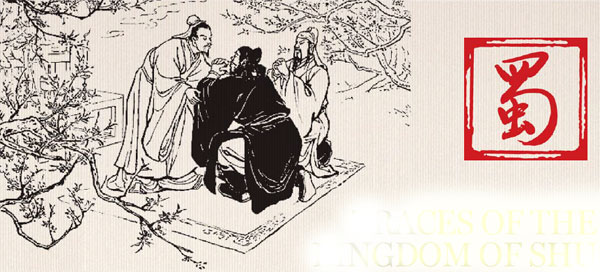
|
Liu Bei (AD 161-223), is a warlord in the late Eastern Han Dynasty (AD 25-220) who founded the Shu Kingdom in the Three Kingdoms period (AD 220-280) and became its first ruler. Despite early failings compared to his rivals and lacking both the material resources and social status, he gathered support along disheartened Han loyalists who objected to Cao Cao's reign over the emperor and relied heavily on this support. |
|
|
|
|
(China Daily 09/28/2016 page38)






